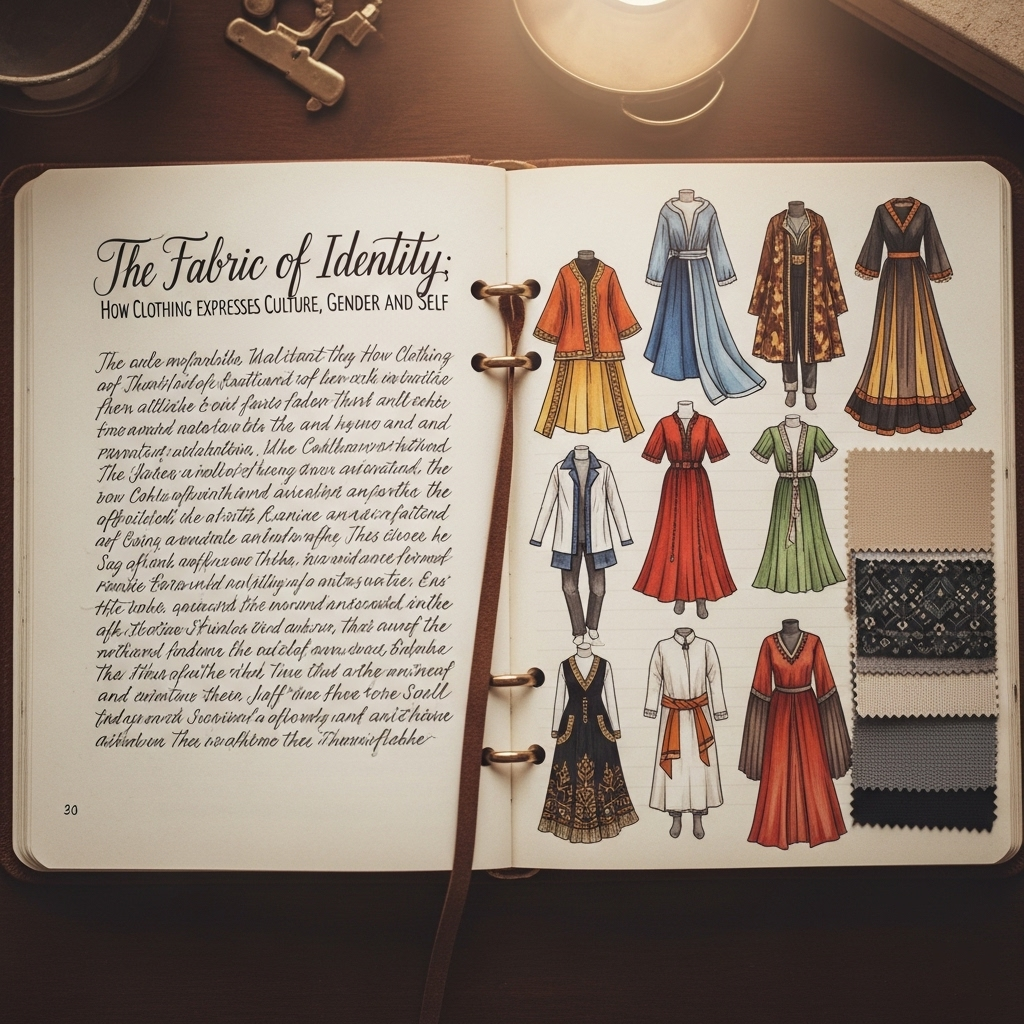Blog
The Fabric of Identity: How Clothing Expresses Culture, Gender, and Self

Clothing is far more than mere covering; it is a potent form of non-verbal communication, a profound language that weaves together threads of culture, gender, social status, and individual identity. From the ceremonial robes of ancient rituals to the meticulously chosen outfit for a first date, what we wear speaks volumes about who we are, where we come from, and what we believe. It’s a powerful canvas upon which we project our deepest selves and navigate our place within society.
One of the most evident ways clothing expresses identity is through cultural heritage. Traditional garments, often steeped in centuries of history and symbolism, serve as powerful markers of belonging to a specific community or region. The intricate patterns of a Scottish kilt, the vibrant colors of an Indian sari, the elegant folds of a Japanese kimono, or the rich embroidery of a Vietnamese áo dài all tell stories of ancestral traditions, geographical influences, spiritual beliefs, and social roles. Wearing these garments, particularly during festivals or significant life events, is an act of preserving cultural memory, celebrating shared identity, and honoring one’s roots. They are living museums, carrying forward the narratives of generations. Even modern fashion often draws inspiration from these cultural wellsprings, though this practice necessitates a careful and respectful approach to avoid cultural appropriation.
The relationship between gender and fashion is deeply complex and historically dynamic. For centuries, clothing has been used to delineate and reinforce gender roles, often with rigid distinctions between “masculine” and “feminine” attire. Skirts for women, trousers for men; corsets to accentuate a feminine silhouette, tailored suits to project male authority. However, modern fashion is increasingly challenging and blurring these traditional binaries. The rise of androgynous and gender-neutral collections reflects a broader societal movement towards gender fluidity and a rejection of restrictive norms. Designers are creating clothing that can be worn by anyone, regardless of their gender identity, prioritizing comfort, personal expression, and a spectrum of styles. This shift reflects a growing acceptance of diverse identities and a desire for fashion to be inclusive and empowering for all.
Clothing also acts as a powerful signifier of social status and power. Throughout history, sumptuary laws dictated who could wear what, based on wealth and class. Elaborate fabrics, rare dyes, and complex designs were reserved for the elite, serving as visible markers of their elevated position. Even today, though less explicit, high-end designer labels, bespoke tailoring, and luxury accessories continue to communicate wealth and discernment. Conversely, uniforms (from military to medical) instantly convey authority, role, and belonging within specific social structures. Subcultures, too, use distinct dress codes to signal membership, rebellion, and shared values. Think of the distressed denim and leather of punk, the dark romanticism of goth, the oversized silhouettes and athletic wear of hip-hop, or the sharp suits and scooters of the mod movement. Each subculture’s style is a deliberate statement, uniting its members and often distinguishing them from the mainstream.
At the most individual level, clothing is a profound tool for personal expression and individuality. It allows us to communicate our personality, mood, interests, and creative spirit without uttering a single word. A bold color choice, an unusual print, a unique vintage piece, or a carefully curated accessories collection can all speak volumes about who we are. Are you playful, reserved, artistic, professional, adventurous, or minimalist? Your wardrobe can be a direct reflection of these inner qualities. It’s a powerful way to curate how we present ourselves to the world and manage the impressions we make.
Moreover, fashion can be a powerful vehicle for protest and activism. From the symbolic white dresses of the suffragettes to the “Black Lives Matter” t-shirts worn by activists today, clothing can transform into a political banner, conveying messages of solidarity, defiance, and a demand for change. It allows individuals to wear their beliefs on their sleeve, literally, and participate in social dialogue.
The relationship between clothing, body image, and self-acceptance is another critical aspect of identity. For a long time, the fashion industry has perpetuated narrow ideals of beauty, often contributing to body dissatisfaction. However, there’s a growing movement towards body positivity and inclusivity, with brands increasingly featuring diverse body types, ages, and abilities in their campaigns and designing clothes that cater to a wider range of sizes. This shift reflects a societal push for greater self-acceptance and a more realistic, empowering representation of the human form. Fashion is slowly becoming a tool for embracing and celebrating one’s unique body, rather than striving for an unattainable ideal.
Looking ahead, as our societies become more interconnected and fluid, the future of identity in dress will likely continue its trajectory towards greater personalization and less rigid categorization. The digital age, with avatars and virtual fashion, introduces new dimensions of self-expression where physical constraints may cease to exist. This offers exciting possibilities for exploring identity in truly novel ways.
In conclusion, the fabric of identity is deeply interwoven with the fabric of our clothes. From the ancestral threads of culture to the evolving definitions of gender, from the subtle signals of social status to the bold statements of individual expression, clothing acts as a living, breathing language of who we are. It is a powerful testament to our collective histories, our ongoing societal dialogues, and our endless human desire to express, connect, and belong.
